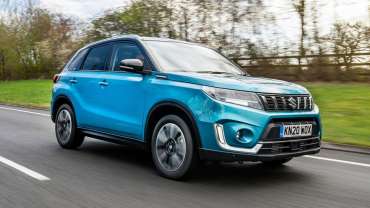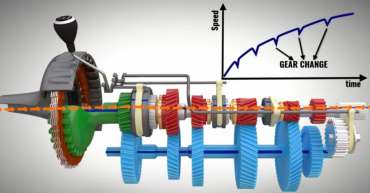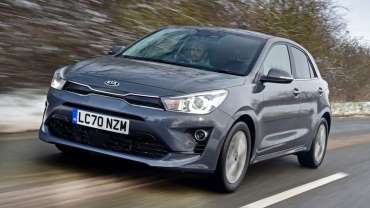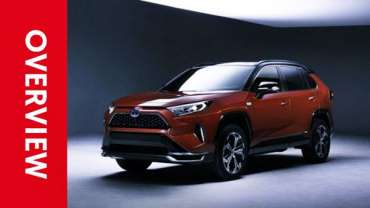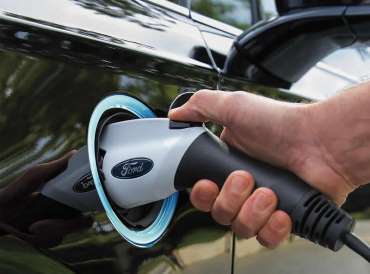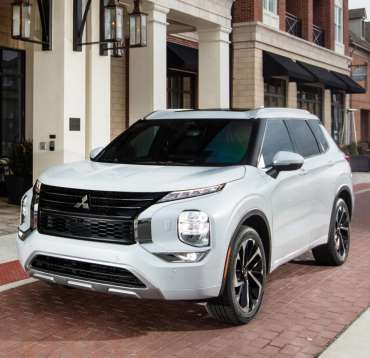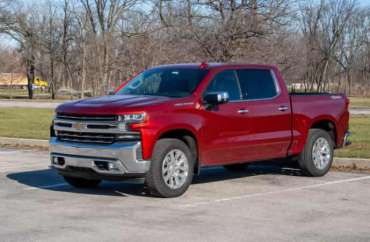
Worldcarblog.com
Suzuki Vitara SUV review
“The Suzuki Vitara is a class stalwart and the latest version is affordable to buy and run, as well as being fun to drive”
The Suzuki Vitara is one of the original small SUVs and has a good reputation for reliable, rugged motoring. Suzuki has taken the latest Vitara down the crossover route and while on-road driving has improved, some of its off-road abilities have diminished slightly. It isn’t designed to tackle rough terrain in the same fashion as the Suzuki Jimny but it can still be specified with four-wheel drive.
The Vitara still suits those who are regularly faced by rough roads and adverse weather conditions. It's also priced to offer good value compared to the Nissan Juke, Peugeot 2008, Renault Captur and Toyota C-HR, although the Citroen C3 Aircross, SEAT Arona and Hyundai Kona put up a strong challenge in terms of metal for your money. The Dacia Duster, meanwhile, comfortably undercuts all of the above, even in range-topping trim with four-wheel drive.
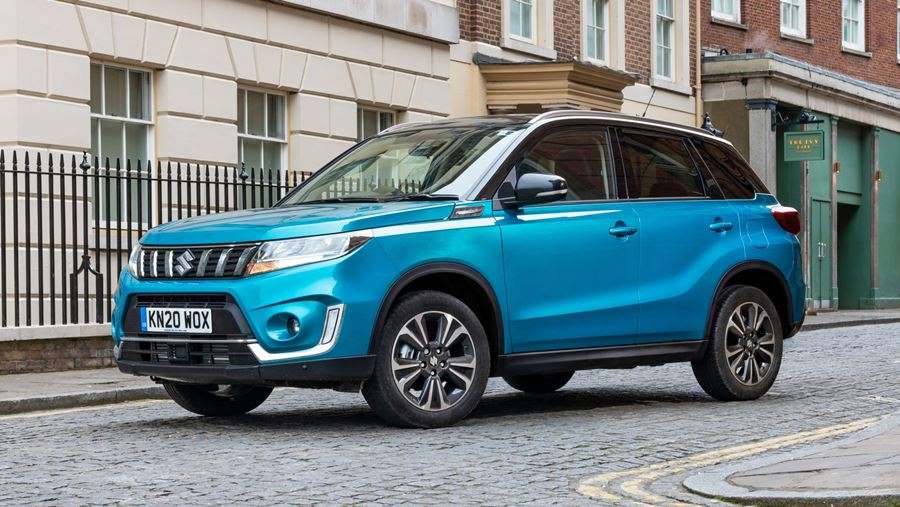
Best small SUVs
A 2018 facelift retained the familiar boxy shape but Suzuki made small changes to the Vitara's exterior to make it look more modern. These included a redesigned front bumper and vertically-slatted front grille, as well as LED rear lights, different alloy wheels and a revised menu of paint colours. There are plenty of straight lines and flat surfaces and it looks rather more traditional than some rivals. A further update in 2020 added LED headlights and 48-volt mild-hybrid electrical assistance.
These simple lines also mean interior space isn’t compromised by swoops and curves, so there’s plenty of room. The Suzuki feels tough, too, with just some cheap-looking plastics inside showing up its competitive pricing. And there’s clearly substance beneath what you can see, with Euro NCAP awarding the Vitara the full five stars for crash safety.
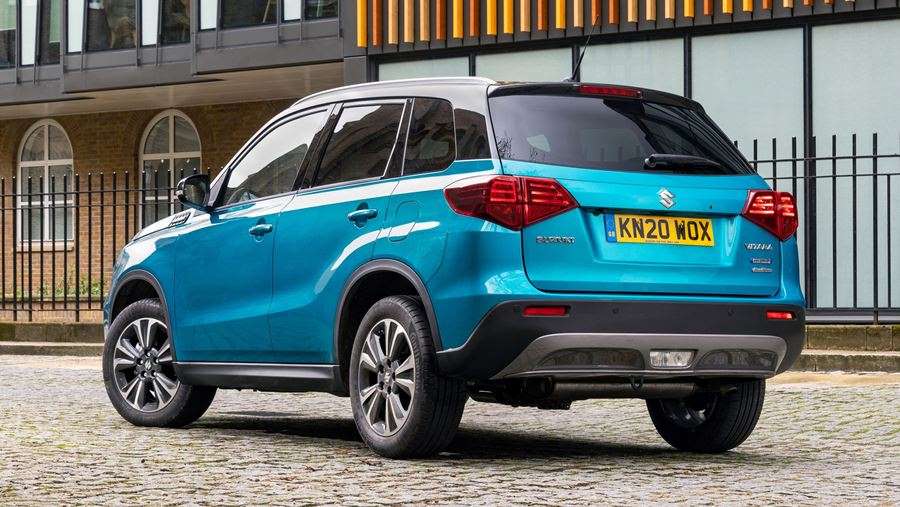
During its life, the Vitara has been offered with several petrol and diesel engines but the 2020 update sees every model come with a 1.4-litre ‘BoosterJet’ petrol. It’s shared with the Suzuki Swift Sport, and now features mild-hybrid technology to boost performance and economy. ALLGRIP four-wheel drive can be chosen but only in conjunction with the plusher SZ-T and SZ5 trim levels.
All cars now get a six-speed manual gearbox as standard, which should be better at cruising than the old five-speed. There’s no automatic version offered at the moment, so if you need one you’ll have to look at a different car.
Unfortunately, the switch to a mild-hybrid powertrain has made the Vitara more expensive, dragging the price up to more than some of its rivals. While some may feel its increased power and economy is worth the extra outlay, a high price tag definitely changes the Vitara for the worse when you consider it as an overall package. With a tall roofline, the Vitara leans a little more in corners than a hatchback or saloon, but grips keenly and can even be fun to drive. Suzuki has even included a ‘Sport’ button, which adds some resistance to the steering and sharpens the throttle response.
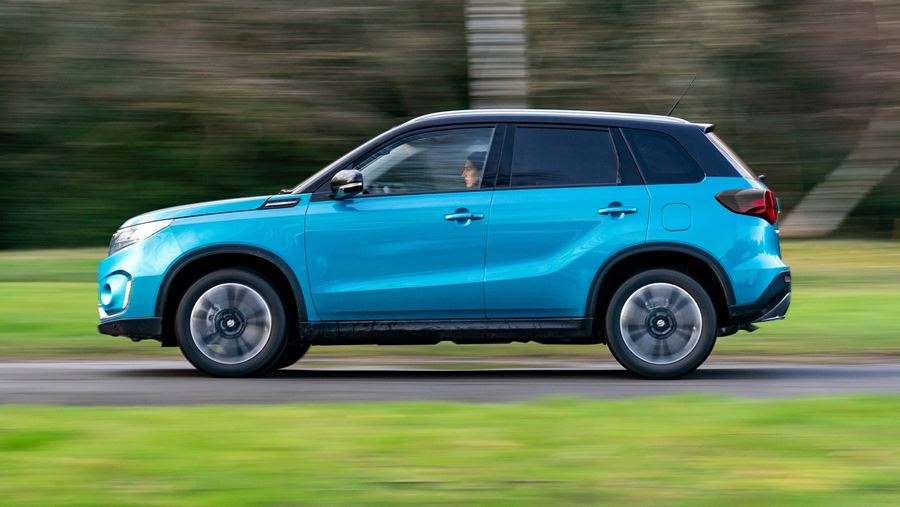
No model is light on equipment, either – even the entry-level SZ4 trim comes with alloy wheels, DAB radio, air-conditioning, adaptive cruise control and Bluetooth to connect your smartphone. Stepping up to SZ-T trim adds sat nav, a reversing camera, Apple CarPlay and Android Auto, rear privacy glass, and special 17-inch alloy wheels, while SZ5 brings parking sensors, keyless entry and start and a panoramic sunroof.
Safety is of course top priority for most families and the Vitara has a five-star crash-test rating from Euro NCAP, thanks to its roster of airbags, anti-lock brakes, electronic stability control, autonomous emergency braking and lane-departure warning. Meanwhile, the Suzuki finished 54th out of the 75 cars ranked in our 2020 Driver Power owner satisfaction survey of cars currently on sale in the UK.
While this Vitara might not be as revolutionary as the original, it does most things very well, and should prove very dependable. If you can live without four-wheel drive, we reckon the mid-range SZ-T is the best value; it’s very well equipped - getting features such as sat nav, a rear parking camera, smartphone connectivity and larger alloy wheels - but only costs around £1,000 more to buy than the entry-level model.
Suzuki Vitara SUV - MPG, running costs & CO2
Fuel economy and other running costs are reasonable
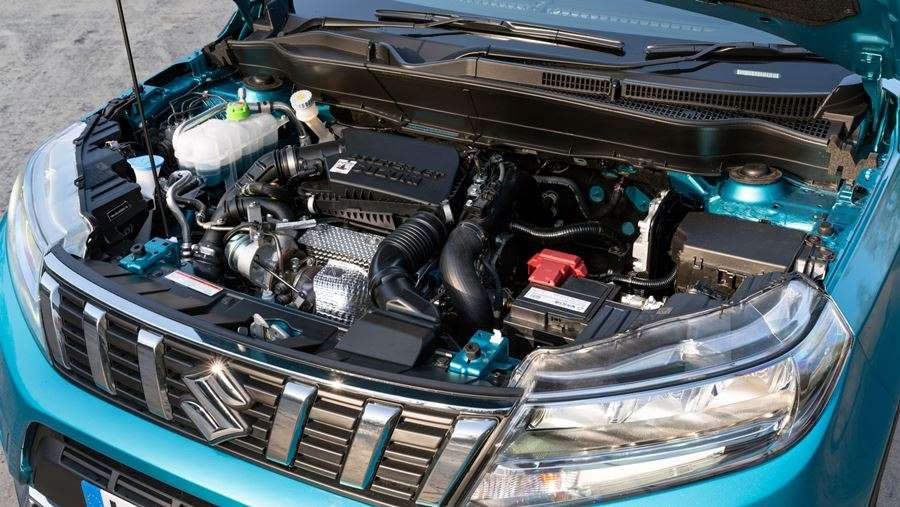
The entry-level SZ4 model has a reasonably competitive starting price but the mild-hybrid technology has pushed prices up by about £1,500 compared to the old non-hybrid car. Forecasts suggest the Vitara won’t keep its value particularly well, which may push up your monthly payments on PCP finance deals.
The Vitara's fuel consumption figures, though, are much better since the electrical assistance was added. It’s now on a par with rivals, so shouldn’t be too expensive to run.
Suzuki Vitara MPG & CO2
All Vitaras are now powered by a 1.4-litre turbocharged petrol engine, which is said to return 49.7mpg in two-wheel drive models. With the new mild-hybrid tech, it returns about 6mpg more than the non-hybrid 1.4-litre engine that was previously offered. CO2 emissions of 128g/km give it an upper Benefit-in-Kind (BiK) rate for company-car drivers.
We wouldn’t recommend going for the four-wheel ALLGRIP drive model unless you really need it because it costs significantly more to buy, adding a premium of around £1,800 to the list price for the SX-T and SZ5 models. It also has an impact on efficiency, reducing fuel economy to around 45mpg while pushing up the CO2 emissions to 140g/km - which places it into a higher BiK banding than the front-wheel drive version.
As every Vitara has mild-hybrid technology, they cost £140 a year to tax, after a CO2-weighted year-one payment that’s included in the on-the-road price.
Insurance group
The Vitara sits in group 21-22 depending on the trim level, and if you spec the ALLGRIP four-wheel drive it’s much more expensive to insure than several small SUV rivals. By comparison, several entry-level versions of the Vitara’s rivals sit in far lower groups, with the Nissan Juke starting in group 11 and the least powerful Renault Captur starting in group eight.
Warranty
As with the rest of its range, Suzuki offers a three-year/60,000-mile warranty on the Vitara. This was once considered the industry standard, but rivals like the Kia Stonic come with a longer cover period as standard.
Servicing
Suzuki says its cars should be serviced once a year or every 9,000 miles – whichever comes first. If you don’t drive many miles, this should mean the same annual trip to the dealership as most rivals, but if you drive a lot, the Vitara could prove more expensive than models with more miles between services. Suzuki offers a range of fixed-cost servicing packages across its cars, so the Vitara should also benefit from this.
Suzuki Vitara SUV - Engines, drive & performance
The Suzuki Vitara range is limited to one engine, but it does feel quite sporty
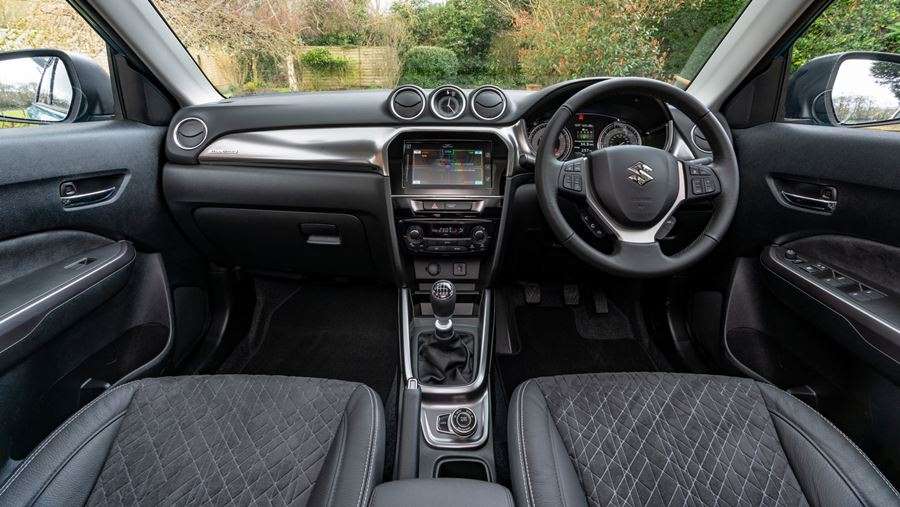
Although the Vitara is one of the least bulky compact SUVs, it's no longer in a field of its own. It leans markedly in corners and rivals such as the Dacia Duster are comfortably a match for the Suzuki when it comes to driving fun. The Peugeot 2008 and SEAT Arona – though SUV-like in appearance – are more removed from the traditional off-roaders of old, offering a more car-like feel.
Driving the Vitara around town doesn't feel like hard work, because the steering is light (if a little artificial-feeling). But as the Vitara is heavier than a city car, it's slower to change direction and leans more in corners than, say, a Suzuki Swift. It holds the road well enough at speed, though.
The four-wheel-drive Vitara offers various transmission settings so you can tweak the car to suit your driving style and the type of road – Auto, Sport, Snow and Lock. Choosing Auto when you're cruising on the motorway puts the car into a fuel-saving permanent two-wheel-drive mode. Other modes help you to get the most out of the four-wheel-drive system.
Suzuki Vitara petrol engines
The 1.4-litre BoosterJet engine develops 127bhp, which is about 20bhp more than the old 1.0-litre engine. It might not sound like much, but it drops the 0-62mph time by two seconds to 9.5 seconds, which is easily competitive with (or better than) many of its rivals. All models get this engine, so there’s no sluggish entry-level version.
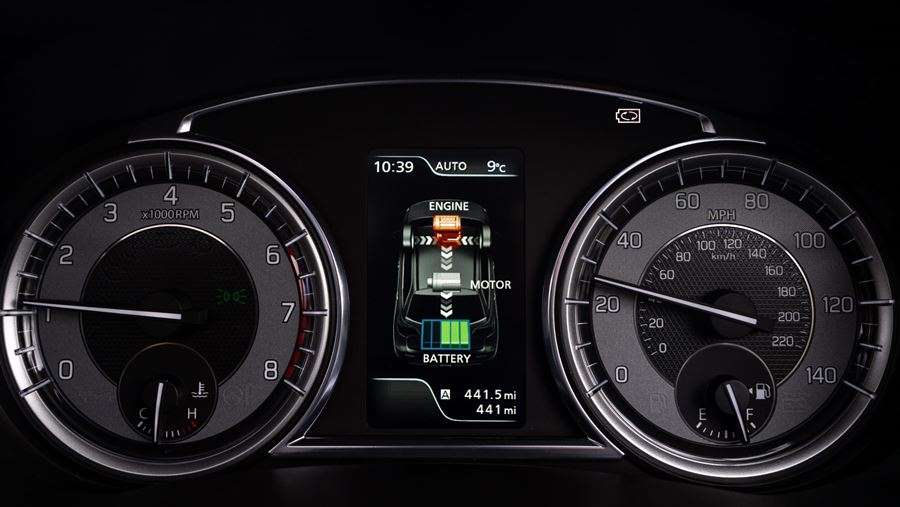
Every version of the Vitara gets mild-hybrid electrical assistance. This consists of a 48-volt battery that’s mounted under the front seat and a belt-driven integrated starter generator, which combine to reduce strain on the engine under acceleration as well as providing extra pulling power when needed. According to Suzuki, the addition of the mild-hybrid system adds around 15kg of additional weight to the Vitara, with no impact on performance.
Its flexible nature means you're not forever having to change gear, which is good news because the Vitara doesn't have the slickest manual gearbox you can buy.
The four-wheel-drive version is a little slower, taking 10.2 seconds to hit 0-62mph. Both front- and four-wheel-drive Vitaras can manage a top speed of 118mph, so cruising at motorway speeds isn’t a problem.
Suzuki Vitara SUV - Interior & comfort
The interior of the new Suzuki Vitara has some neat touches, but some plastics look and feel cheap
The Suzuki is a comfortable car to drive around in, riding well at speed. All models are quiet when you settle into an A-road or motorway cruise and vibrations are kept to a minimum. The ride can be a little fidgety on imperfect roads, though. In the SZ-T model, white stitching on the seats and steering wheel bring some welcome colour and lift the mood of the interior.
Suzuki Vitara dashboard
The recent updates brought only minor changes inside the Vitara. Most prominent are a colour information screen between the dashboard dials, a front centre armrest and the introduction of soft-touch plastics at the top of the dashboard. Despite these tweaks, the Vitara falls some way behind the best European rivals when it comes to interior design.There are some pleasing materials dotted around the cabin in frequent contact points, such as on the door handles, but the majority of plastics are hard and scratchy, which could put some buyers off. It's perhaps not such an issue on the lower-priced models, but a little embarrassing on top-spec versions that run the classy Skoda Kamiq close on price.
From behind the wheel, you’ll find the layout of the dashboard is logical – everything is where you'd expect it to be. The large analogue clock in the middle of the dash is an attractive touch, although this is only standard on SZ5 trim.
The seven-inch touchscreen interface has chunky, bright and clear graphics. However, two translucent menu bars mean the sat-nav map itself is squeezed into a narrow strip in the middle of the screen, which is frustrating. The Vitara also has MirrorLink functionality for smartphone use.
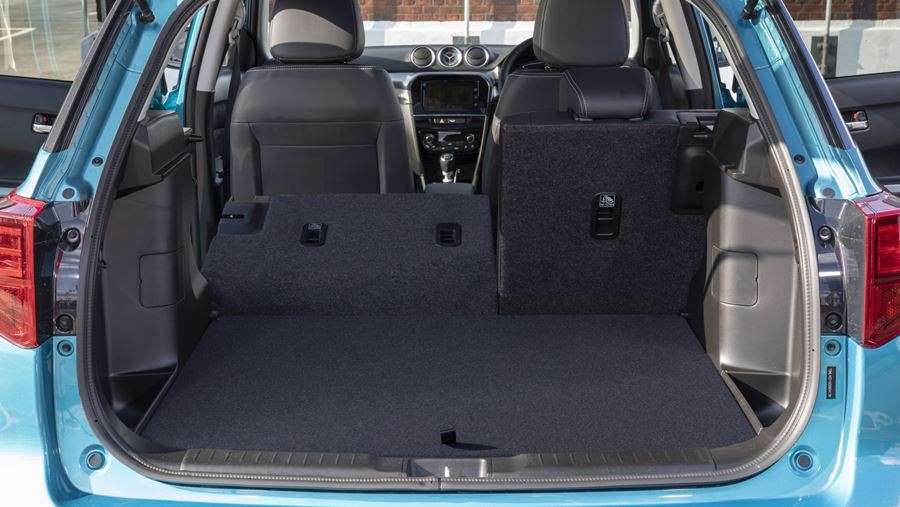
Equipment
There are three trim levels – SZ4, SZ-T and SZ5. Even the entry-level SZ4 has a decent amount of kit, with 16-inch alloy wheels, a CD player, DAB digital radio, adaptive cruise control, automatic air-conditioning, Bluetooth and a USB port all coming as standard.
The mid-range SZ-T trim brings bigger 17-inch alloys, rear privacy glass and the touchscreen - with sat nav, a reversing camera display, Apple CarPlay and Android Auto.
The range-topping SZ5 model gets a panoramic sunroof, front and rear parking sensors, folding mirrors, and keyless entry and start.
Options
Suzuki offers a wide range of paint finishes for the Vitara, including a distinctive metallic orange and a pearl metallic turquoise. Two-tone colour combinations are also on offer (except on the SZ4 trim), some of which might be described as an acquired taste. You can also specify the colour of the front grille, bumper garnishes, instrument-panel trim, air-vent trim and clock.
You can specify a personalisation package, which gets you chrome-plated foglight surrounds, side mouldings and a roof spoiler. The Rugged package gets you front and rear skid plates, foglight surrounds, side mouldings and boot lip protection. These packs are not available on the SZ4 model.
Technology
The Vitara’s infotainment system isn’t the sleekest looking setup, but it’s logically laid out and pretty easy to use. If you go for one of the higher trim levels, the included sat nav features a map display that’s a little on the small side, while the screen reflects sunlight quite badly – although this is compensated for somewhat by the clear and excellent voice guidance.
Get the latest news & reviews
Signup today for regular updates
Enter your email address
Sign up
Speaking of voices, while the Vitara comes with voice control (if you choose a model with sat nav) we found this a bit hit-and-miss when it came to recognising our spoken inputs.
Suzuki Vitara SUV - Practicality & boot space
A well-designed boot helps make the new Suzuki Vitara a very practical family car
The Suzuki Vitara's light doors are easy to open and close. They open to almost 90 degrees, so getting in the car is a breeze. Although the car's seating position is higher than a hatchback's, older drivers shouldn't have any problem getting in.
Finding a good driving position once you’re behind the wheel isn’t a problem, as the wheel adjusts for reach and rake on all models, while the seat adjusts for height.
A high ride height and light steering mean the Vitara is good to drive around town. It's a sizeable car – 40mm longer than the Nissan Juke – so parking could be tricky in a tight spot. Parking sensors are available, but they’re only standard on the highest trim level.
Suzuki Vitara interior space & storage
There's plenty of headroom for all occupants in the Vitara, despite its sporty roofline. Rear legroom is decent, but if you're behind the driver and more than six feet tall, you may find space to be tight.
The doors offer plenty of storage space in their bins, including bottle-holders, but the size of the glovebox is underwhelming. There are two cup-holders up front and the front passenger seat has a pocket on the back, which is handy for holding a road atlas. There are also two ISOFIX child-seat anchor points in the rear.
Boot space
The Vitara's boot has a capacity of 375 litres. Drop the 60:40 split-folding rear seats down and this expands to 1,160 litres. This is pretty much the same size as a family hatchback like the Ford Focus, but many small SUVs offer more luggage space. The Nissan Juke offers 422 litres, while the Renault Captur has sliding seats and offers 422 to 536 litres.
The Suzuki's boot is very well designed, with a wide opening. It's nice and square inside, with no awkwardly shaped protrusions. There are also a couple of useful cubbies either side of the boot.
A removable false floor means you have a bit of space underneath to hide valuable items, plus there's no pronounced boot lip, which makes it as easy as possible to access the loading area. Furthermore, when you fold the rear seats down, they're completely flat, which is a boon when loading large bulky items. The seats fold down easily at the touch of a button.
Suzuki Vitara SUV - Reliability & safety
Early signs point to the new Suzuki Vitara being a safe and fairly reliable family car
The Vitara offers plenty of safety equipment as standard and Suzuki is well known for making fairly tough off-roaders.
Suzuki Vitara reliability
The Vitara feels built to last inside, despite the cheap-feeling plastics used in places. And Suzuki has a very good reputation for building SUVs that are both rugged and long-lasting.
The Suzuki Vitara was rated average for reliability in our 2020 Driver Power owner satisfaction survey, and finished in 54th place out of the top 100 cars currently on sale in the UK. Of the owners who responded, 10.6% reported experiencing a problem with their car at least once in the first year, with the infotainment system causing the majority of issues. Ride quality and fit-and-finish weren’t scored highly for satisfaction either. However, Suzuki owners were happy with running costs, acceleration, handling and rear-seat legroom, and the brand came 17th out of 30 in our Driver Power manufacturer poll.
Safety
The Vitara was crash-tested by the safety experts at Euro NCAP, coming away with a perfect five-star score. It was individually rated at 89% for adult occupant protection, 85% for child occupant protection and 76% for pedestrian protection. Safety assistance was scored at 75%. Key Vitara rivals such as the Nissan Juke, Peugeot 2008 and Renault Captur also all scored five stars.
Most of the Vitara's safety equipment comes as standard on all trim levels – and there's plenty of it. The list includes automatic braking if the car detects a potential collision ahead, cruise control, hill hold (to prevent the car rolling back on hills), seven airbags, ISOFIX child-seat mounting points and electronic stability control (to help prevent skids).
Radar brake support and four-wheel-drive hill-descent control are only available on the top-of-the range SZ5 trim.
Manual vs automatic transmission
Although the automatic transmission has not been so popular in our region in recent years, its popularity is slowly growing. However, have you ever wondered how it works? What is the difference between a manual and an automatic transmission?
The main question that arises is why is a gearbox needed at all? Primarily due to the increase in engine efficiency. If the engine transmitted its power directly to the wheels of the vehicle, its efficiency would be significantly lower. Interesting information is how the engine crankshaft, in some cases, turns as many as four times during a time in which the wheel turns only once. Accordingly, at a speed of 140 km / h and 5,500 engine revolutions, the average size wheel turns only 1300 times.
The automatic transmission consists of the so-called. planetarium (gear). Planetary gears revolve around a "solar" gear, and are located on their carrier, which in practice is located on the axis of the aforementioned sun. Gears depend on stopped gears that can stop the brakes or engage the clutches back (the whole story is simplified). As a rule, the gearshift is done automatically by means of a centrifugal regulator which directs the oil in the gearbox, and it can also be done manually by means of the gear lever.
On the other hand, the manual transmission, which the vast majority of drivers are accustomed to, works on a completely different principle. As a rule, it consists of gears that rotate at a constant speed and gears of different sizes (do not rotate at a constant speed), which give different gear ratios. The gear ratio is defined by the gear ratio and depends on the type of car. For example, in some cars, depending on the gear, it can be 2.8: 1, 1.8: 1, 1: 1, etc.
For all who want to know more about the difference and the principle of operation of automatic or manual transmission, below is a video.
{vembed Y=auQgOtveQi0}
Kia Rio hatchback review
"The Kia Rio is a competent supermini, but because it doesn't excel in any one area, it's difficult to recommend over the competition"
The Kia Rio has matured rather impressively since the first, rather mundane and budget-focused version arrived over a decade ago. While still good value, the updated Rio is now more sensible than penny-pinching, and a worthy competitor in the hard-fought supermini class.
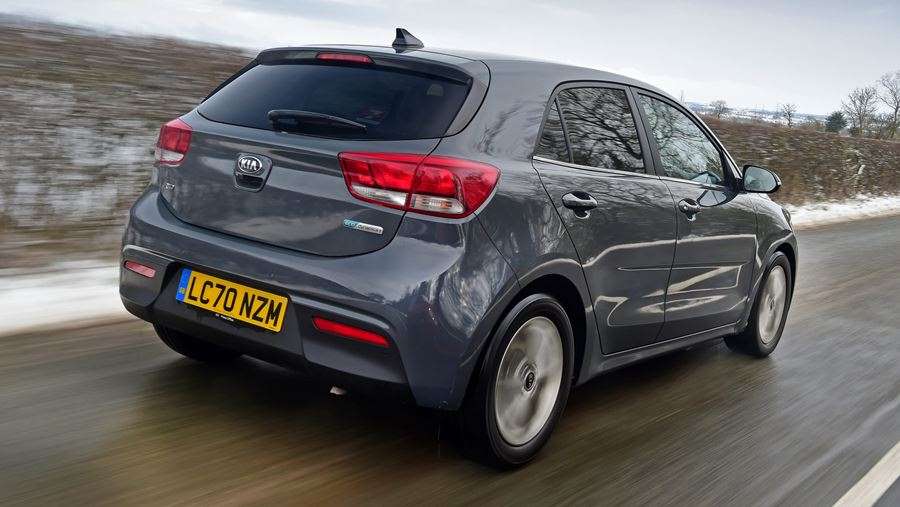
Best reliable small cars
While it may not be as stylish as some, its strengths are practicality, fuel efficiency and generous standard equipment, not to mention the seven-year warranty that makes any Kia a trouble-free ownership proposition. It's a competent all-rounder and deserves to be weighed up against European rivals such as the Ford Fiesta, Renault Clio, Vauxhall Corsa, SEAT Ibiza, Hyundai i10 and Skoda Fabia, as well as the Nissan Micra and Toyota Yaris.
Compared to the Ford and SEAT, the Kia feels pretty average from behind the wheel. Its steering responses are dull and it doesn't feel as poised or agile as the Ford Fiesta, yet it doesn't have the comfortable ride of the Renault Clio, either.
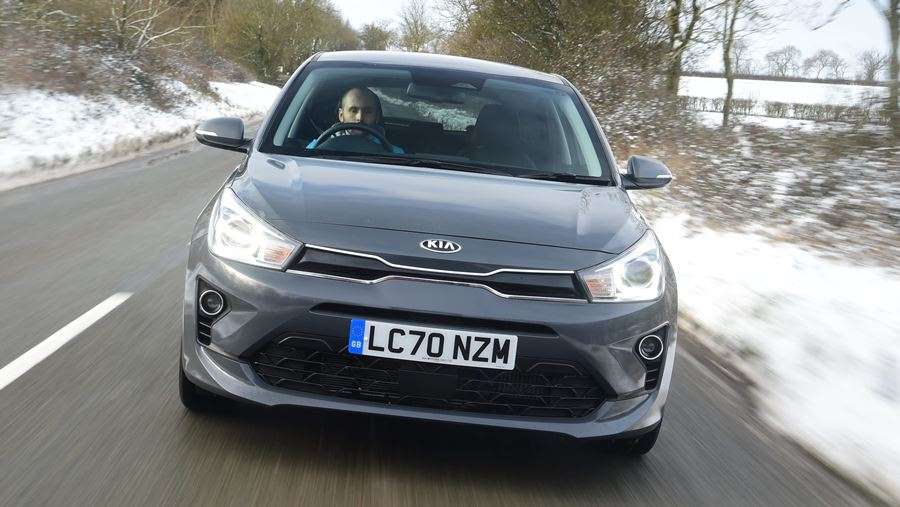
There are three engines to choose from, our favourite of which is a 1.0-litre petrol with either 99 or 118bhp. This is a relatively modern three-cylinder and it's quite peppy – which suits its position near the top of the price list. The range-topper also gets 48-volt mild-hybrid tech and a clever manual gearbox, helping to make its running costs more competitive. The two versions can reach 62mph from rest in 10 and 9.8 seconds respectively, but aren't quite as quiet or smooth as the equivalent rival engines.
There's also the less expensive 83bhp 1.25-litre engine, capable of returning up to 49.6mpg. Meanwhile, for those who still want fuel-efficiency but whose driving is mainly urban, the 99bhp petrol engine still returns up to 52.3mpg.
Further adding to the Rio's common-sense credentials is its spacious interior. It's now available as a five-door only, so access to the front and rear seats is easy and nobody on board is likely to feel claustrophobic. Nor is your luggage likely to complain of being cooped up – there's 325 litres of boot capacity, which is about 10% more than a Fiesta.
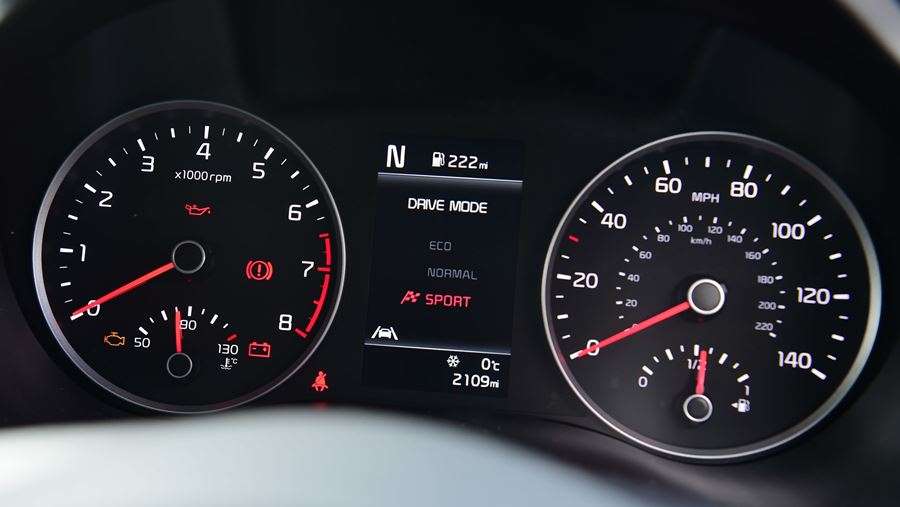
Even the Rio's trim levels are sensibly named, dubbed simply 1, 2, and 3, although the range-topping model is known as GT-Line S. Even the entry-level 1 trim includes air-conditioning, which hasn’t always been standard on the most basic cars in this class, and 2 versions onwards get a new eight-inch touchscreen. It should be noted that you can only choose the most powerful petrol engine in the 3 trim and above. We recommend the mid-range 2 in 99bhp 1.0-litre form as a good all-rounder.
It's clear, then, that while the Rio has plenty going for it, it's no class leader in this tough segment. While many will appreciate its no-nonsense character, it doesn’t really excel in any one area and its rather sedate looks and driving experience mean it won’t be a car you buy with your heart. However, if you're more interested in hassle-free and affordable transportation, there's no ignoring that long warranty, nor the fact that the Kia Rio finished in 23rd place out of the top 75 cars in our 2020 Driver Power owner satisfaction survey.
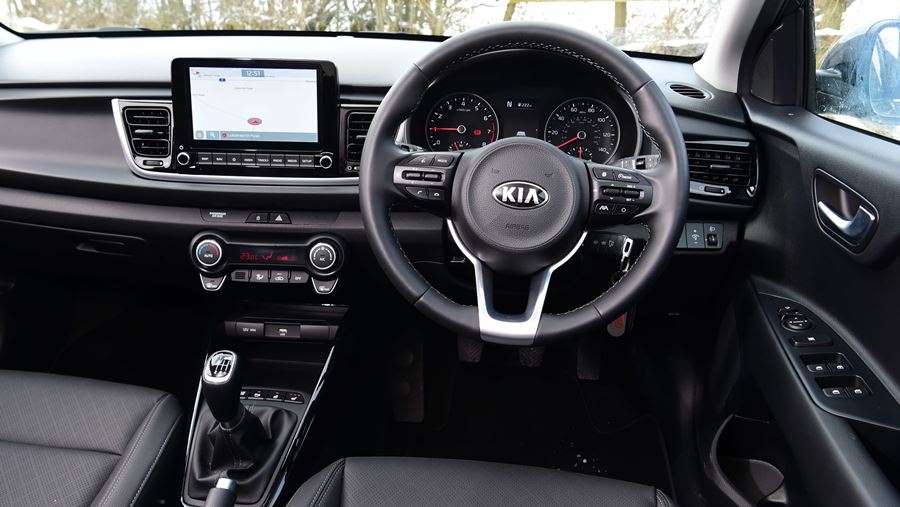
The Kia Rio engine range has been overhauled for the latest model and all of the engines offer decent efficiency. There's no full-hybrid version to rival the Renault Clio E-Tense, Honda Jazz or Toyota Yaris, but the top 1.0-litre petrol engine now gets an innovative gearbox and mild-hybrid setup to help boost efficiency.
Kia Rio MPG & CO2
The most efficient engine is the 1.0-litre turbocharged petrol. With a manual, it can return up to 52.3mpg on the WLTP cycle, and it's both more economical and more powerful than the naturally aspirated 1.2-litre engine. It's the engine we recommend due to its reasonable mix of performance and economy, and it's a good choice for company car drivers too, as it falls into a low Benefit-in-Kind (BiK) band.
The more powerful version of the same 1.0-litre engine is the strongest performer in the line-up, but owing to its small size and mild-hybrid technology, it still manages 52.3mpg and emits 122-126g/km of CO2. A small battery and generator can add torque to help the engine pull away, while an innovative manual gearbox can automatically disconnect drive while coasting to allow the engine to switch off briefly.
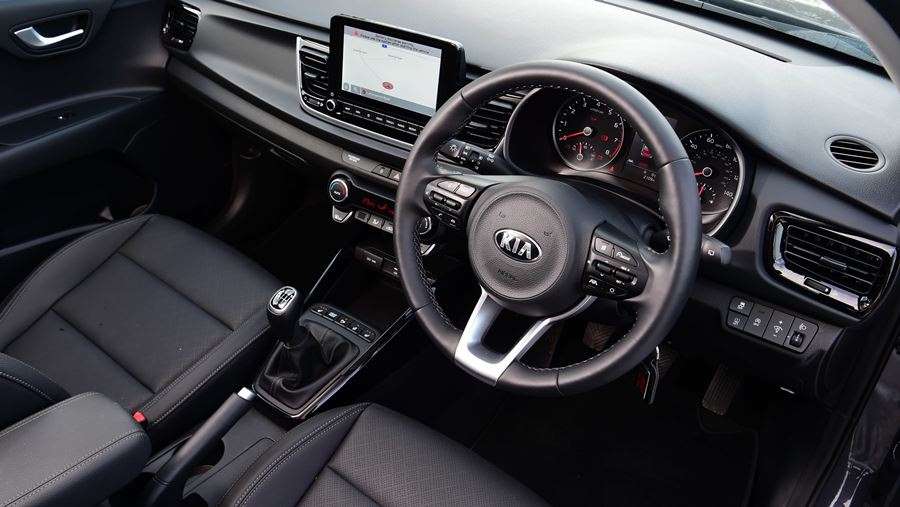
The 83bhp 1.25-litre petrol is the cheapest engine in the Rio range, returning up to 49.6mpg and emitting 130g/km of CO2. In late 2018, Kia ended production of the diesel version of the Rio hatchback. All Rios are liable for road tax of £150 a year.
Insurance group
The Kia Rio occupies insurance groups four to nine (out of 50), with the 83bhp 1.25-litre petrol costing least to insure and the range-topping 118bhp 1.0-litre 3 and GT-Line S trims sitting in group nine.
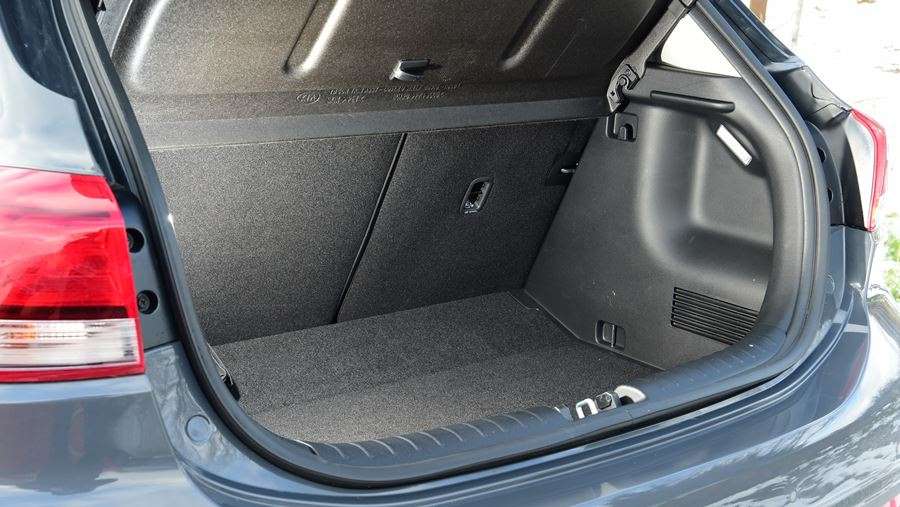
Warranty
One area in which the Rio excels, like all Kias, is warranty cover. Lasting for seven years or 100,000 miles, the brand’s warranty offers fantastic peace of mind and should give owners confidence in the reliability of their cars. It's fully transferable to subsequent owners of the car, too.
Servicing
Kia servicing costs are generally competitive. Petrol models need a service every 10,000 miles or once a year, with diesels needing attention every 20,000 miles or once a year. Kia offers a ‘Care-3’ service pack that costs £299 and covers you for the first three services. For an extra £30, you can get the car’s first MOT included, and for £599 you can cover the cost of the car’s first five services.
Toyota Rav4 2023 Hybrid Reviews
The Toyota Rav4 is one of the legendary cars of Toyota. First launched in 1994, the Toyota Rav4 is still being developed today. Recently Toyota has released its latest generation new Toyota Rav4 2023, After sliding first in Japan and the United States, the latest generation Toyota RAV4 began to be marketed in Southeast Asian countries.
Updates occurred on each side of the 2023 Toyota Rav4, ranging from engines to safety features. In general, whatever is in the latest Generation Toyota Rav4 cars is the latest innovation in the automotive industry today. For example, the Hill Assist Control safety feature, this feature will be very useful in the brake system that holds the vehicle for a few seconds so as not to move backward when moving the foot from the brake pedal to the gas pedal, with an HSA, helping the driver not to panic when the vehicle moves backward when on the ramp.
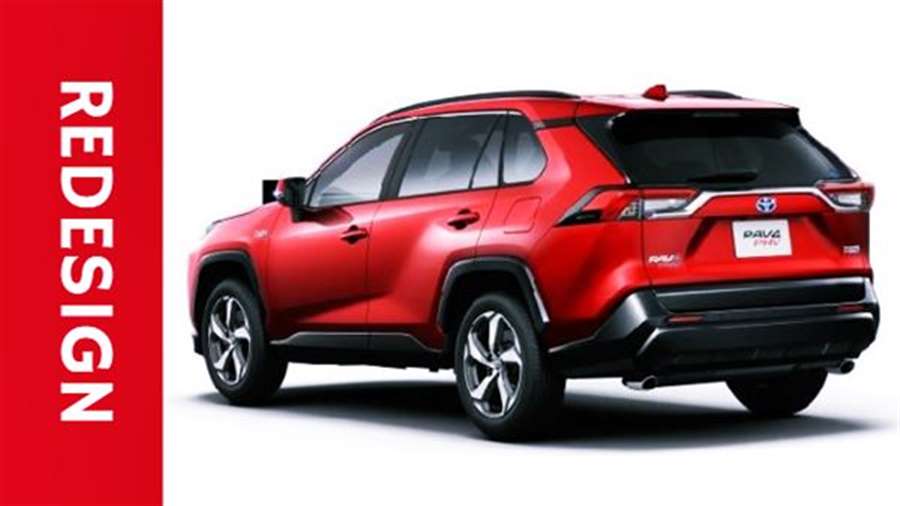
Toyota Rav4 2023 Interior Design
This feature can also be activated or manually disabled by the driver. Generally, there is a button with an image icon of the car that is tilted, and underneath there is a diagonal line that represents the climb. and many others.
Changes can also be felt in the Cabin section of the New Toyota RAV4 2023, the interior design is built very well and equipped with a variety of interesting features that are in it, in terms of interior design looks the latest generation Toyota Rav4 prefers practicality over style. The cabin space is more spacious for storing small cargo, and all the buttons and controls are easy to find and operate. The latest generation 2023 Toyota Rav4 provides many conveniences at the basic level, such as dual-zone automatic climate control, tilt steering wheel, and telescope.
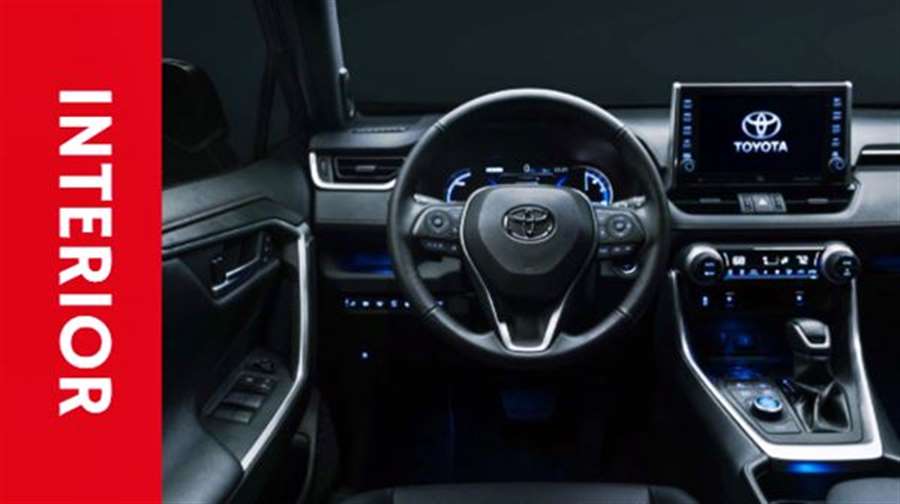
Toyota Rav4 2023 Interior Design
Toyota Rav4 2023 Infotainment
Not much change in the Infotainment section that we get, the latest generation of Toyota Rav4 still comes with a 9.0-inch infotainment screen that emerges from its dashboard and is equipped with multimedia features that Integration Apple CarPlay and Android Auto, as well as onboard Wi-Fi hotspots, are all standard. JBL 11-speaker navigation and stereo systems are available.
Toyota Rav4 2023 Safety Features
currently, we have not obtained the results of safety tests on the latest generation of New Toyota Rav4 2023, but if we refer to the previous generation that has been released by the National Highway Traffic Safety Administration (NHTSA) and the Insurance Institute for Highway Safety (IIHS) has given good value to the RAV4 for accident feasibility. Toyota has been an aggressive adopter of driver assistance features and offers many of those features standard throughout the RAV4 range. we hope for the latest model of the rav4 can get better value than previous generations.
Toyota Rav4 2023 Engine Performance
For its own engine, 2023 All New Toyota Rav4 is equipped with a 2.5-liter four-cylinder engine aided by two electric motors for a combined output of 219 horsepower, this stops a time of 7.4 seconds 60-mph. This model has also been equipped with the best safety system to reduce the risk of collision.
Ford is building a new electric car on Volkswagen's platforms
Ford has announced that it will build a new electric car in Europe using Volkswagen's mechanical frame - a platform for battery-powered vehicles, and that it will spend $ 1 billion on rebuilding a factory in Germany to produce zero-emission cars.
Ford of Europe President Stuart Rowley told reporters that the factory in Cologne will build one model of electric passenger vehicle, which would enter the market in the middle of 2023, and it is possible that another model will be produced there.
He said it was part of Ford’s efforts to offer fully electric or gas-electric versions of all passenger vehicles in Europe by 2024, and all will be fully electric by 2030. The company predicts that by 2030, two-thirds of its commercial vehicle sales will be vehicles in Europe be electric or hybrid.
The agreement with Volkswagen, which allows the use of the mechanical framework of that German electric car company, known by the German abbreviation MEB (modular electric tool set), allows Ford to take advantage of Volkswagen's huge investments in electric cars, while the entire industry is shifting to zero-emission vehicles. pollution.
The Volkswagen platform uses standard mechanical bases such as the battery, wheels and axles, which can be adapted to produce different vehicle models.
Carmakers in Europe must sell more electric vehicles to meet new, lower emission limits for carbon dioxide, the main gas that causes global warming. If manufacturers do not keep the average emissions of their entire fleet below the limit, they will pay large fines. Rowley said Ford can avoid fines.
The company said that commercial vehicles are the key to growth and profitability in Europe, with new products and services through an alliance with Volkswagen and a joint venture between Ford and Otosan in Turkey.
The announced investment, which will be made by 2025, is among Ford's most significant for more than a generation and "underscores our commitment to Europe and the modern future," Rowley said.
Ford said that the investment in the factory in Cologne, with more than 4,000 workers, is starting after Ford's European operations returned to profit in the fourth quarter of 2020.
That investment is part of Ford’s goal to spend at least $ 22 billion on electric vehicles from 2016 to 2025.
This is the new Mitsubishi Outlander - and this time it looks really new
And will he come to Europe? Hopefully, because the new Mitsubishi Outlander looks really good.
The last generation of Outlanders did not look new even at the time of the premiere, while later refreshments did not contribute much. It is possible that this was a deliberate attempt by the company to attract customers who do not run after the news and who rely on proven solutions that are easy to use. Because we can find a lot of positive information about the release version of Outlander today.
Last night, Mitsubishi unveiled the next generation of its flagship model on the Amazon Live platform. Great idea, as more and more people are buying cars online.
The new Outlander is closely linked to Nissan for the first time. It was made on the platform that Nissan developed for the Rogue or X-Trail model, although the designers made sure that the acquisition was not obvious. In this madness, the new Outlander can bravely fight for the title of the most extravagant SUV with the new Hyundai Tucson.
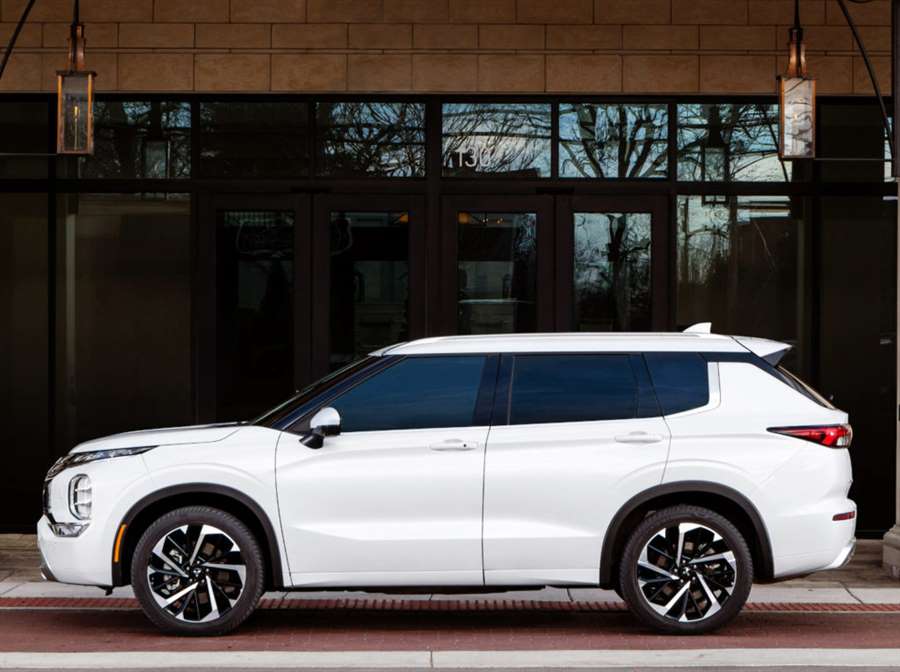
Compared to its predecessor, the Outlander has grown even more. It is 471 cm long, 186 cm wide and 175 cm high. So it’s only 15mm longer, but 51mm wider and 38mm bigger. The wheelbase has also been increased - from 267 to 270.6 cm. All passengers, especially those in the second and third rows, will get an extra inch - as the Outlander will still be available for purchase in the seven-seater variant.
Fortunately, the interior has undergone tremendous changes
Luckily, it depends on who judged the previous generation. Comparing them to the competition, the interior of the previous generation Outlander looked old, which cannot be said for the new generation. It has a screen behind the wheel, a head-up display, a tablet attached to the top of the center console.
It also has classic air conditioning and ventilation controls, while watching the temperature display is similar to screens from the end of the last century which is even very classic. But if something works great and is practical, why would you have to change it.
The interior of the Outlander is shown in two configurations and looks good in both. And again - you can find similarities with Nissan. The only thing that’s a little hard to digest is the silver plate around the gearbox and the engine start button — it looks like it was inserted there at the last minute by a random piece found in some corner of the design studio.
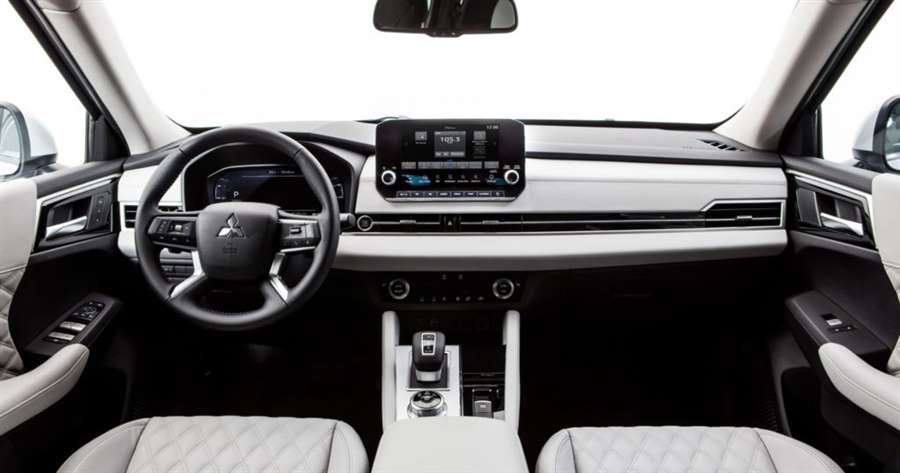
There is nothing to complain about, be happy that it has a 4 × 4 drive
Mitsubishi points out that this is a Super All-Wheel Control 4WD drive, the one it has been bragging about since competing in WRC rallies. It should allow for efficient movement no matter what is under the wheels of the car.
And the movement itself will be provided by a 2.5-liter petrol engine with 181 hp and 245 Nm of torque, driven by a continuously variable 8-speed gearbox. The mentioned numbers do not look impressive, and how they turn into performance - the manufacturer has not revealed that yet. But the chances of seeing a car in this configuration in Europe are pretty negligible.
New Mitsubishi Outlander in Europe?
It will or will not come to the European market - it was not said. In theory, we are still in the period of freezing the European range that the company introduced in the first phase of the pandemic last year.
We are waiting for the official announcement of the European branch of the brand.
2021 Chevrolet Silverado 1500 Review: Few Wows but Plenty of Good
The verdict: The 2021 Chevrolet Silverado 1500 full-size pickup truck is refined, capable and offers an impressive turbo-diesel engine option, but its primary competitors offer more luxury and innovation.
Versus the competition: Certain trim levels of the Ram 1500 are more luxurious than the Silverado 1500, and the redesigned 2021 Ford F-150 has more powertrain choices, including a hybrid that can also run high-draw power tools, but the Silverado nails the fundamentals with an unruffled driving experience and functional interior.
The Chevrolet Silverado 1500 was last redesigned for the 2019 model year, and the 2021 model offers a choice of three cabs, three bed lengths, five engines and eight trim levels. Now available is a new Multi-Flex Tailgate similar to the GMC Sierra’s MultiPro Tailgate, which can transform into a bed extender, assist step and more. Also available are additional camera technology for safer trailering and wireless Apple CarPlay and Android Auto smartphone connectivity.
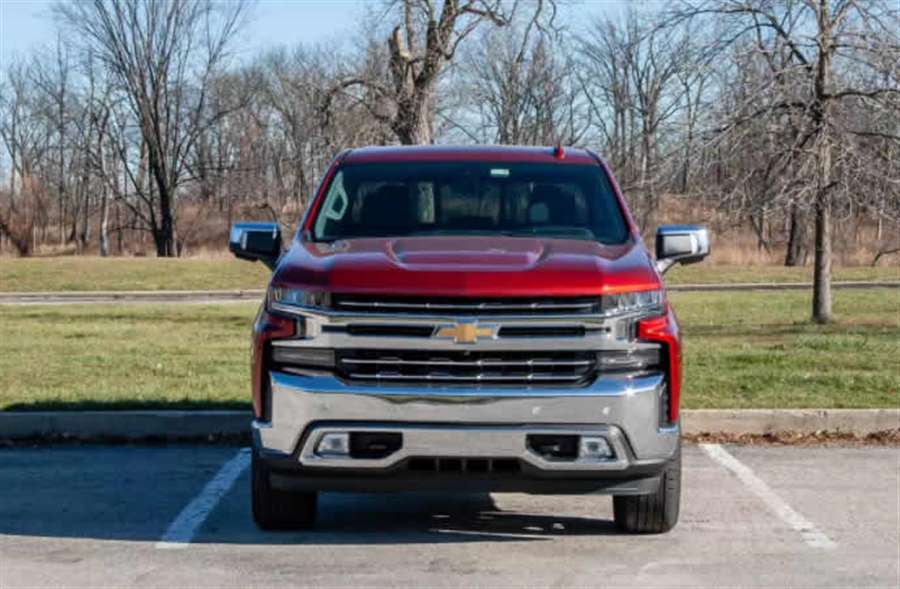
Our test truck was a crew-cab, short-bed LTZ trim with the optional turbo-diesel 3.0-liter Duramax inline-six engine. With optional features and packages, the as-tested price was $60,265, including destination.
Related: 2021 Chevrolet Tahoe Z71 Vs. 2020 Silverado 1500 Trail Boss Z71: How They Compare
Diesel Drivability
The Silverado 1500’s available diesel engine is an impressive performer, delivering smooth power that moves the truck with ease. The engine is rated at 277 horsepower and 460 pounds-feet of torque, and it works with a responsive 10-speed automatic transmission that quickly kicks down when you need more power. Acceleration from a stop is smooth and predictable, and the diesel has adequate power reserves for high-speed passing.
While diesels have a reputation for being loud and unrefined, the Silverado’s diesel engine is nothing like that. There are some characteristic diesel noises, but they’re more of an underlying soundtrack rather than an overwhelming racket. There’s also no excess vibration; it’s as smooth as a gas engine in everyday driving.
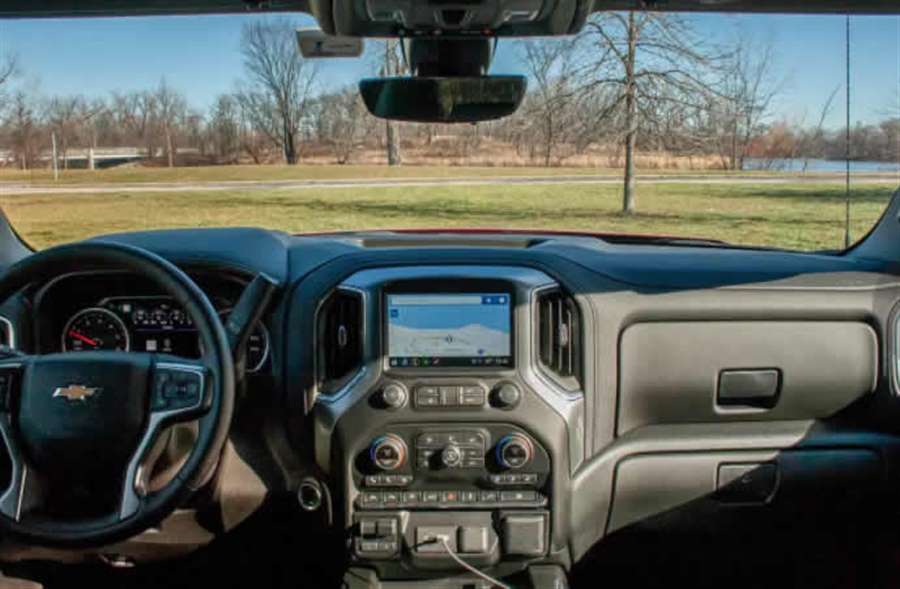
The diesel engine also makes the rear-wheel-drive 2021 Silverado 1500 the most efficient full-size truck you can buy; 4×2 versions are EPA-rated at 23/33/27 mpg city/highway/combined, while four-wheel-drive models are rated 22/26/24 mpg. The next closest competitors are the 2021 Ram 1500 diesel and 2021 Ford F-150 hybrid (see their estimated gas mileage).
The Silverado’s focus on refinement extends to other aspects of the driving experience. Steering response and precision are good, making it easy to place the truck where you want, and the Silverado cruises comfortably at highway speeds with the truck’s tall ride height providing commanding forward views. Unladen ride quality can get a bit bumpy on rougher roads, but the truck’s lack of squeaks or rattles on broken pavement is a testament to its stiff chassis.
Brake-pedal feel isn’t typically a full-size truck highlight, and the Silverado is no exception; the pedal has a numb, spongy feel that makes it seem like you’re stepping on a block of foam.
A Functional but Spartan Interior
Chevrolet took an evolutionary approach when it redesigned the Silverado’s interior a few years back. Ram, meanwhile, chose to create “wow”-inducing cabins in uplevel versions of its 1500, and this dichotomy is evident in the LTZ trim we tested. The LTZ is one of the Silverado’s higher trims, but with average-looking materials and design details, it lacks the level of luxury you get in the Ram 1500 Laramie Longhorn and Limited. Even the Silverado’s top-of-the-line trim, the High Country, isn’t as nice as a high-end Ram.
That said, the Silverado LTZ interior is functional overall with easy-to-use controls and an intuitive 8-inch touchscreen multimedia system featuring wireless Apple CarPlay and Android Auto (corded CarPlay and Android Auto are standard). Some buttons, though — such as those for the driver’s memory feature and heated and ventilated front seats — are unnecessarily small.
The driver and front passenger are separated by a wide center console with two cupholders and a bin with an available wireless charging pad. There’s also a big storage bin under the front center armrest.
Like crew-cab versions of the Ram 1500 and Ford F-150, the Silverado’s rear seating area is spacious. Three passengers can ride comfortably thanks to stretch-out levels of legroom, plenty of headroom and large side windows that provide good outward views. Unlike certain Ram 1500 trims, however, the Silverado’s rear bench seat doesn’t recline. The Chevy’s seat cushion flips up for extra in-cab storage, revealing a mostly flat floor, and there are also available concealed storage compartments in the backrest.
Crew-cab Silverados come with a 5-foot-8-inch or 6-foot-6-inch cargo box. The tall stance of our LTZ test truck resulted in a nearly waist-high box floor, which made the standard integrated bumper steps all the more useful for getting in and out of the bed. A power tailgate is available, but the tailgate is easy to close manually.
A base regular-cab Silverado with the standard 4.3-liter V-6 engine can tow 7,900 pounds when properly equipped, but certain more expensive models are actually rated to tow less; the V-6-powered crew-cab Trail Boss with a regular cargo box has a 7,200-pound towing capacity, the Silverado’s lowest.
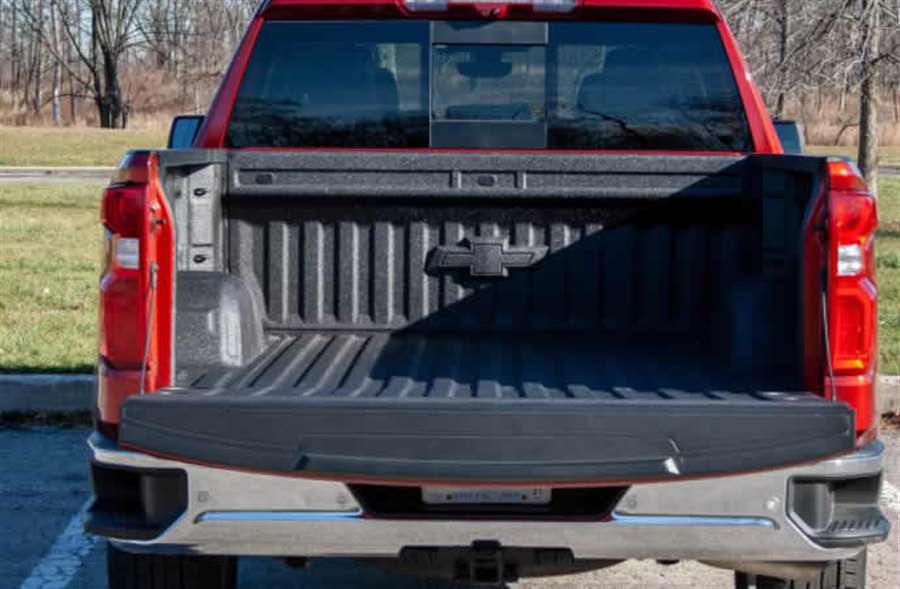
The truck’s highest, 13,300-pound towing capacity is achieved with a double-cab RST trim level with the optional 6.2-liter V-8 and the Max Trailering Package. Towing capacities vary significantly between these extremes — our diesel test truck, for instance, was rated to tow 9,000 pounds — but each Silverado includes a sticker with truck-specific ratings so it’s easier to know its limits.
The Silverado’s optional camera technology also lets you monitor a connected trailer from the truck’s dashboard touchscreen. The system uses auxiliary cameras to show what’s behind a connected trailer when driving or reversing as well as conditions inside the trailer. You can also use truck-mounted cameras to monitor the cargo box or make hitching a trailer easier. There’s also a new view for 2021 trucks that shows whether there’s enough space to change lanes when towing.
Crash Tests, Safety and Assist Features
The crew-cab Silverado 1500 received good ratings (on a scale of good, acceptable, marginal or poor) in all Insurance Institute for Highway Safety crashworthiness tests except the passenger-side small overlap test, where the truck rated marginal. All other large pickups evaluated by the IIHS performed better than the Silverado and its GMC Sierra sibling in this test except for the 2021 Toyota Tundra, which is soon to be replaced by a redesign. (Notably, the redesigned 2021 Ford F-150 had not been tested as of publication, but its results will appear on the organization’s Large Pickups page once completed.) The Silverado’s optional automatic emergency braking system earned a superior score (on a scale of superior, advanced or basic), but the available LED reflector headlights, which go in LTZ models, received a poor rating.
Other optional safety features include blind spot warning with rear cross-traffic alert, lane-keeping assist, a 360-degree camera system, and front and rear parking sensors.
Value in Its Class
You can spend luxury-vehicle money on a Silverado, as the as-tested price of our truck attests, but the same is true for high-end versions of the Ram 1500 and Ford F-150. However, the things that separate the Silverado from its competitors — precise steering and impressive overall driving refinement — don’t require a top trim if one of those isn’t in your price range. The nicest Silverado isn’t in the same league as a top-of-the-line Ram 1500 or Ford F-150, though, so if luxury is what you want, one of those trucks might better meet your needs.

